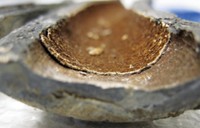Advertisement
Grab your lab coat. Let's get started
Welcome!
Welcome!
Create an account below to get 6 C&EN articles per month, receive newsletters and more - all free.
It seems this is your first time logging in online. Please enter the following information to continue.
As an ACS member you automatically get access to this site. All we need is few more details to create your reading experience.
Not you? Sign in with a different account.
Not you? Sign in with a different account.
ERROR 1
ERROR 1
ERROR 2
ERROR 2
ERROR 2
ERROR 2
ERROR 2
Password and Confirm password must match.
If you have an ACS member number, please enter it here so we can link this account to your membership. (optional)
ERROR 2
ACS values your privacy. By submitting your information, you are gaining access to C&EN and subscribing to our weekly newsletter. We use the information you provide to make your reading experience better, and we will never sell your data to third party members.
Environment
Lead levels remain high in Flint’s water
Despite improvements, new data still exceed federal action level
by Matt Davenport
April 15, 2016
| A version of this story appeared in
Volume 94, Issue 16

The water chemistry is improving in Flint, Mich., but the city’s water is still breaking the federal rule for lead levels, according to tests led by Marc A. Edwards’s team at Virginia Tech.
Edwards and his team helped expose the water crisis in Flint last year. They unveiled new results at a press conference on April 12 from samples collected by 174 Flint residents last month. These samples came from homes that the team also analyzed in its 2015 study.
EPA and Michigan officials have taken steps to improve Flint’s water quality since Edwards and his colleagues showed that the city’s water was corroding pipes and leaching lead into the water. For example, Flint’s pipes once again carry treated water from Detroit, rather than treated Flint River water. The Detroit water is less corrosive than the river’s, in part, because it has lower chloride levels and contains an orthophosphate corrosion inhibitor.
Yet 15% of the samples collected last month had lead concentrations higher than 15 ppb, the EPA’s action level, with one sample exceeding 2,000-ppb lead, according to the team’s tests. Compliance with EPA’s Lead & Copper Rule requires that no more than 10% of households in an area can exceed the 15-ppb threshold. “Our hopes were that the lead levels would have dropped more than they did,” Edwards said.
Flint’s residents are using little water, on the order of 20–45% of typical water use around the U.S., Edwards said. This low usage delays the delivery of protective orthophosphate to plumbing and slows the removal of lead that leached into the system, he added.
Pushing more water through the pipes would enhance the delivery of phosphate, says Susan J. Masten, an environmental engineer at Michigan State University who was not involved with the study. “But whether the lead levels are related to low water usage is unproven,” she says. “We simply don’t know how effective increasing water consumption will be.”
Still, the recommended course of action is to flow more water through the pipes to enhance the delivery of orthophosphate, as well as the removal of residual lead, Edwards said. “The system is definitely on its path to recovery, but we’ve got to get more water flowing.”






Join the conversation
Contact the reporter
Submit a Letter to the Editor for publication
Engage with us on Twitter